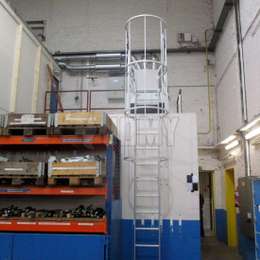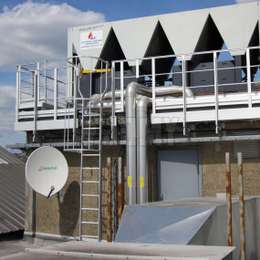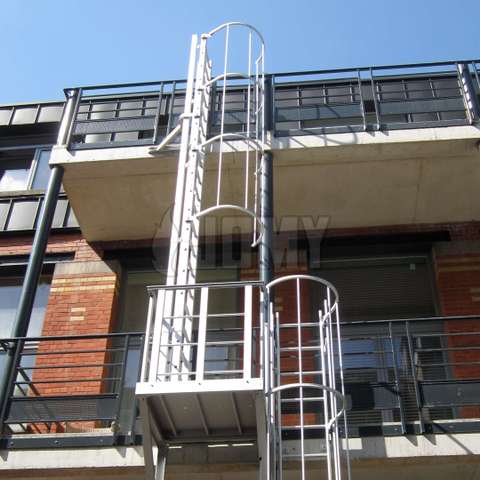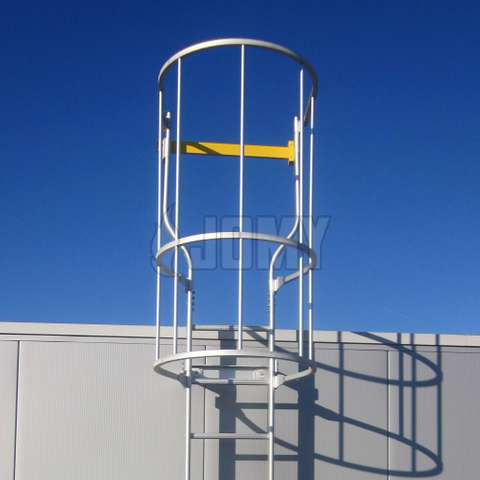Less esthetic than retractable ladders, cage ladders can be used for:

Fixed fire escape ladder for balconies

Solar panel access ladder with cage

Storage tank ladder with cage

Window fire escape cage ladder

Secured roof access ladder for maintenance

Fixed ladder for roof access of a tall facility building

Ladder for flat roof exit window

Access ladder for water treatment facilities

Mezzanine ladder with cage

Well ladder with cage and telescopic handles

Access ladder for air conditioning units maintenance and inspection

Access to industrial walking platforms











